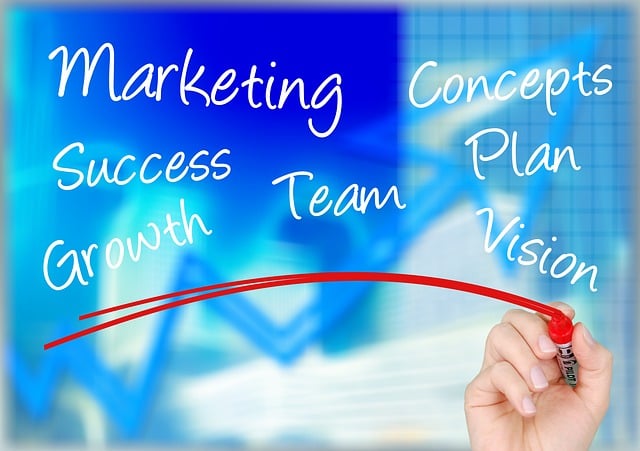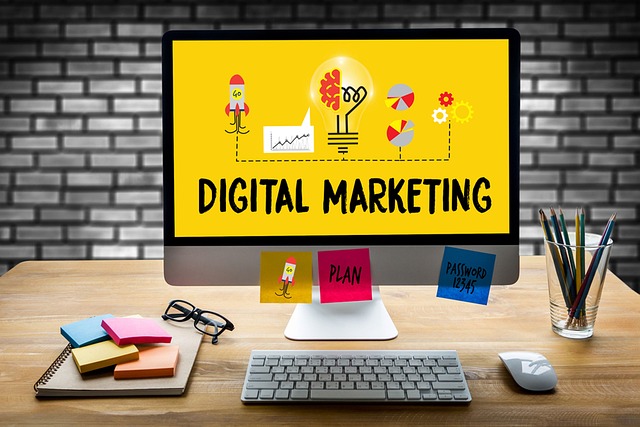AI is transforming auto repair through data-driven insights, automating tasks, and enhancing marketing strategies. By leveraging machine learning, AI systems analyze customer behavior, predict parts failures, and streamline operations, reducing diagnostic times and errors. Intelligent tools handle routine tasks, allowing technicians to focus on complex work. AI-driven marketing platforms offer personalized campaigns, proactive service reminders, and predictive analytics, fostering customer loyalty and cost-effective strategies in a competitive market. Integrating AI through five key steps—identifying needs, selecting tools, preparing data, training models, and testing—drives efficiency and growth in automotive business marketing.
AI tools are transforming auto repair shops, streamlining operations, and boosting efficiency. This article explores how artificial intelligence is revolutionizing the industry, from diagnostics and repairs to customer engagement. We delve into effective marketing strategies leveraging AI to gain a competitive edge in the bustling automotive landscape. Additionally, we provide a step-by-step guide on integrating AI systems, empowering auto repair businesses to thrive in today’s digital era while enhancing their marketing through AI applications.
- Revolutionizing Auto Repair with AI: Streamlining Operations and Enhancing Efficiency
- Marketing Strategies for Automotive Businesses: Leveraging AI to Gain Competitive Edge
- Integrating AI Systems: A Step-by-Step Guide for Auto Repair Shops
Revolutionizing Auto Repair with AI: Streamlining Operations and Enhancing Efficiency

AI is transforming auto repair, streamlining operations and boosting efficiency across the board. By leveraging machine learning algorithms, AI systems can analyze vast datasets to predict parts failures, identify complex issues with precision, and suggest optimal repair methods. This not only reduces diagnostic time but also minimizes costly errors.
These intelligent tools can automate routine tasks such as inventory management, scheduling appointments, and generating estimates, freeing up technicians for more complex work. Moreover, AI-driven marketing platforms offer auto repair shops valuable insights into customer behavior, enabling them to tailor their services, improve retention, and ultimately grow their businesses in a competitive market.
Marketing Strategies for Automotive Businesses: Leveraging AI to Gain Competitive Edge

In today’s digital era, auto repair shops that leverage AI systems for automotive business marketing are poised to gain a significant competitive edge. These cutting-edge tools enable businesses to understand customer behavior better through data analysis, allowing them to craft targeted and personalized marketing campaigns. By employing machine learning algorithms, AI can predict maintenance needs based on vehicle history and driving patterns, proactively engaging customers with service reminders and special offers. This not only enhances customer satisfaction but also fosters loyalty by demonstrating a forward-thinking, proactive approach.
Furthermore, AI systems streamline marketing efforts through automation. Chatbots powered by natural language processing (NLP) can handle initial customer inquiries, providing instant quotes and scheduling options. Automated content generation ensures consistent and engaging social media posts, while predictive analytics optimizes advertising campaigns to reach the right audience at the right time. These strategies not only increase efficiency but also ensure that marketing efforts are cost-effective and aligned with current market trends, giving auto repair shops a competitive advantage in a crowded industry.
Integrating AI Systems: A Step-by-Step Guide for Auto Repair Shops

Integrating AI Systems into your auto repair shop isn’t as daunting as it may seem. Here’s a step-by-step guide to help you navigate this process smoothly:
1. Identify Your Needs: Start by evaluating your automotive business marketing goals and pain points. Consider areas like diagnostics, parts inventory management, customer service, and scheduling. AI can enhance each of these aspects, from streamlining diagnostic processes with machine learning algorithms to optimizing inventory through predictive analytics.
2. Choose the Right AI Tools: Once you’ve identified your needs, research and select AI systems that align with them. For instance, consider implementing natural language processing (NLP) chatbots for customer service, computer vision for diagnostics, or robotic process automation (RPA) for repetitive tasks like scheduling and inventory management. Make sure these tools integrate seamlessly with your existing software infrastructure.
3. Data Preparation: AI systems rely on quality data to learn and adapt. Ensure you have clean, organized datasets relevant to your use cases. This might involve digitizing existing records, standardizing formats, and addressing any data inconsistencies or gaps.
4. Training and Implementation: Train your selected AI models using your prepared data. This step is crucial for fine-tuning the algorithms to your specific needs. After training, integrate these systems into your shop’s workflows. This could involve setting up chatbots on your website, implementing new diagnostic software, or automating routine tasks.
5. Testing and Optimization: Once implemented, thoroughly test each AI system to ensure accuracy and efficiency. Continuously monitor their performance and gather feedback from employees and customers. Use this data to refine and optimize the systems as needed.
AI tools are transforming auto repair, offering significant advantages in efficiency and operations. By integrating these innovative systems, shops can streamline processes, enhance customer experience, and gain a competitive edge in the market. This article has provided valuable insights on revolutionizing auto repair with AI, marketing strategies for automotive businesses, and a practical guide to integration. Embracing AI systems is not just an option but a necessity for modern auto repair shops looking to thrive in today’s digital landscape.
